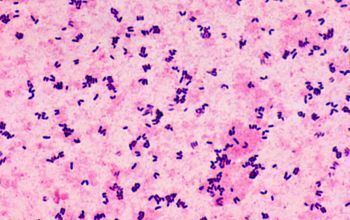Family Corynebacteriaceae Higher classification Corynebacterium Order Actinomycetales | Suborder Corynebacterineae Genus Corynebacterium Phylum Actinobacteria Rank Species Subclass Actinobacteridae | |
 | ||
Similar Bacteria, Corynebacterium pseudotuberculosis, Corynebacterium bovis, Corynebacterium jeikeium, Corynebacterium urealyticum | ||
Corynebacterium ulcerans is a rod-shaped, aerobic, and gram-positive bacteria. Most Corynebacterium are harmless but some cause serious illness in humans, especially in immunocompromised humans. C. ulcerans has been known to cause diphtheria and diphtheria-like infections in patients. Previously thought to simply be contaminants recovered from diphtheria patients, “coryneform” or “diphtheroids” are now believed to be the cause of such infections.
Contents
Disease
Increasingly over the past few decades, C. ulcerans has been recognized as an emerging pathogen in over six countries across the globe including the United States, the United Kingdom, and Japan. C. diphtheriae is the causative agent of classical diphtheria, and C. ulcerans has been found to carry the same gene that codes for the diphtheria toxin. After swabbing lesions on a 53-year-old woman in Germany who experienced swelling of her pharynx and who developed a whitish pseudomembrane, doctors were able to grow C. ulcerans. This made it the first documented case of classical diphtheria caused by C. ulcerans in Germany.
C. ulcerans can also cause zoonotic infections. In 2003, A 47-year-old woman in Le Kremlin-Bicêtre, France was admitted to the intensive care unit for labored breathing. It was found that as a result of a kidney graft received the previous year, the patient was immunocompromised and vulnerable to C. ulcerans, which was found growing from a swab of her throat. After many tests, it was concluded that the patient had contracted the disease from her dog, which was found to have chronic labial ulcerations that provided an easy way to transmit the bacteria to the patient.
In addition to classical diphtheria, C. ulcerans can also cause skin infections that resemble classical cutaneous diphtheria as a result of production of the diphtheria toxin. By contracting this skin infection, patients become more vulnerable to contracting other bacteria that exist naturally in the patient’s environment that can cause life-threatening diseases.
Treatment
Patients who contract diphtheria and diphtheria-like symptoms as a result of C. ulcerans require treatment with Diphtheria antitoxin and antibiotics. Surgery and other more extreme measures must be taken if not treated immediately.
